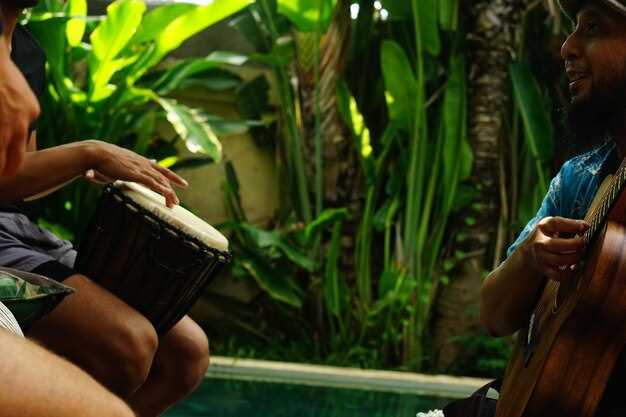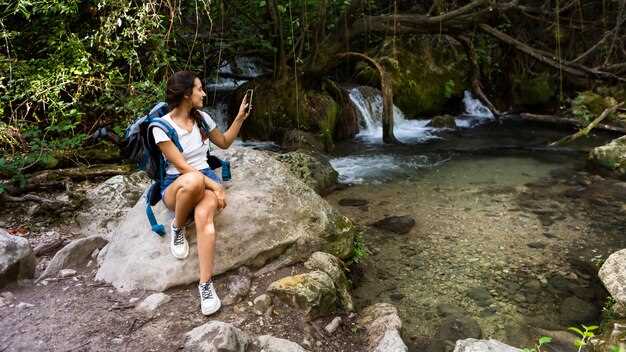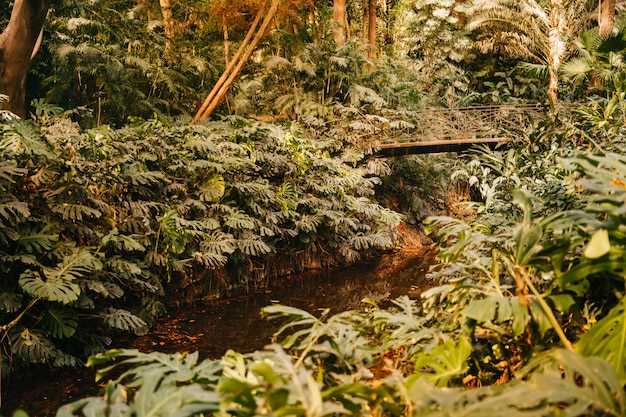Preserving Tahiti’s Ecosystem Through Sustainable Tourism and Conservation Efforts

As the world becomes increasingly aware of the importance of preserving our planet’s delicate ecosystems, the paradisiacal island of Tahiti stands as a shining example of sustainable practices and conservation efforts. Nestled in the heart of the South Pacific, this idyllic destination boasts a diverse range of flora and fauna, captivating visitors with its breathtaking landscapes and vibrant marine life. However, the key to maintaining the ecological balance lies not only in the hands of local authorities and environmental organizations but also in the responsible choices made by tourists and the tourism industry as a whole.
With its crystal-clear lagoons, lush rainforests, and pristine beaches, Tahiti’s natural beauty is a testament to the harmonious coexistence of humans and nature. The island’s unique biodiversity, including endemic species found nowhere else on Earth, is a treasure that must be protected for future generations. Recognizing this, Tahiti has embraced a holistic approach to tourism, one that prioritizes the preservation of its natural environment while offering visitors an authentic and sustainable experience.
At the heart of Tahiti’s conservation efforts is the promotion of responsible tourism practices. By encouraging visitors to engage in activities that have minimal impact on the environment, such as snorkeling, hiking, and bird-watching, the island aims to foster a deep appreciation for its natural wonders. Through educational initiatives and partnerships with local communities, tourists are empowered to become stewards of the environment, understanding the importance of preserving Tahiti’s unique ecosystem and the role they play in its conservation.
The Importance of Preserving Tahiti’s Ecosystem

Ensuring the longevity and well-being of Tahiti’s natural environment is of utmost importance for the future of the region. The delicate balance of its diverse ecosystems, including its lush forests, vibrant coral reefs, and unique wildlife, is crucial for the overall health and sustainability of the island. By preserving Tahiti’s ecosystem, we are safeguarding its natural beauty, protecting its biodiversity, and securing the livelihoods of local communities.
Preserving the ecosystem of Tahiti involves implementing sustainable practices that minimize the negative impact of human activities on the environment. This includes promoting responsible tourism, adopting eco-friendly practices in industries such as agriculture and fishing, and establishing protected areas to conserve fragile habitats. By doing so, we can ensure that future generations can continue to enjoy the pristine beaches, crystal-clear waters, and abundant wildlife that make Tahiti a truly remarkable destination.
| Benefits of Preserving Tahiti’s Ecosystem: |
| 1. Conservation of Biodiversity: By preserving Tahiti’s ecosystem, we protect the diverse range of plant and animal species that call the island home. This helps maintain the delicate balance of the ecosystem and prevents the loss of valuable genetic resources. |
| 2. Economic Stability: The preservation of Tahiti’s ecosystem is closely linked to the tourism industry, which is a significant source of income for the region. By maintaining the natural beauty and unique attractions of the island, sustainable tourism can thrive, providing employment opportunities and economic stability for local communities. |
| 3. Climate Change Mitigation: Tahiti’s ecosystem plays a vital role in mitigating the effects of climate change. The island’s forests act as carbon sinks, absorbing greenhouse gases and helping to regulate the global climate. Preserving these forests is crucial for combating climate change and preserving the well-being of the planet. |
| 4. Cultural Preservation: Tahiti’s ecosystem is deeply intertwined with the cultural heritage of its people. The traditional practices and knowledge passed down through generations are closely connected to the natural environment. By preserving the ecosystem, we also protect the cultural identity and traditions of the local communities. |
In conclusion, the preservation of Tahiti’s ecosystem is not only essential for the island’s natural beauty and biodiversity but also for the economic stability and cultural preservation of the region. By implementing sustainable practices and raising awareness about the importance of conservation, we can ensure a sustainable future for Tahiti and its unique ecosystem.
Sustainable Tourism: Balancing Economic Growth and Environmental Conservation
In the pursuit of economic growth, it is crucial to strike a delicate balance with environmental conservation. Sustainable tourism offers a solution that allows for the development of the tourism industry while minimizing its negative impact on the environment. By adopting sustainable practices, destinations like Tahiti can ensure the long-term preservation of their natural resources and ecosystems, while still reaping the economic benefits of tourism.
1. Responsible Tourism
Responsible tourism is at the core of sustainable tourism practices. It involves promoting tourism activities that are environmentally friendly, socially and culturally sensitive, and economically viable. In Tahiti, this means encouraging tourists to engage in activities that have minimal impact on the delicate ecosystems, such as snorkeling and diving in designated areas, supporting local businesses, and respecting the local culture and traditions.
2. Conservation and Restoration Efforts
Conservation and restoration efforts play a vital role in preserving Tahiti’s unique ecosystems. By implementing measures to protect and restore natural habitats, such as coral reefs and rainforests, Tahiti can ensure the sustainability of its tourism industry. This can be achieved through initiatives like marine protected areas, reforestation projects, and the promotion of sustainable fishing practices. These efforts not only safeguard the environment but also enhance the overall tourist experience by providing opportunities for eco-tourism and nature-based activities.
- Implementing marine protected areas to preserve coral reefs and marine biodiversity
- Engaging in reforestation projects to restore and protect the natural beauty of Tahiti’s rainforests
- Promoting sustainable fishing practices to maintain the abundance of marine resources
- Collaborating with local communities to raise awareness and involve them in conservation efforts
By striking a balance between economic growth and environmental conservation, sustainable tourism in Tahiti can ensure the preservation of its natural resources for future generations. Through responsible tourism practices and conservation efforts, Tahiti can continue to attract visitors while safeguarding its unique ecosystems and cultural heritage.
Conservation Efforts in Tahiti: Protecting Biodiversity and Natural Resources
In the enchanting paradise of Tahiti, a dedicated focus on conservation efforts is underway to safeguard the rich biodiversity and precious natural resources of the region. Through a range of initiatives and collaborations, Tahiti is striving to protect its unique ecosystems and ensure their sustainability for future generations.
Preserving Biodiversity
One of the key objectives of conservation efforts in Tahiti is the preservation of its diverse range of flora and fauna. Through the establishment of protected areas and the implementation of strict regulations, Tahiti aims to safeguard its endemic species and maintain the delicate balance of its ecosystems. By promoting research and education, local communities and visitors alike are encouraged to appreciate and respect the unique biodiversity found in Tahiti.
Sustainable Management of Natural Resources
Another crucial aspect of conservation efforts in Tahiti is the sustainable management of its natural resources. With a focus on responsible practices, such as sustainable fishing and forestry, Tahiti aims to ensure the long-term availability of its resources without depleting or damaging the environment. By promoting sustainable agriculture and reducing waste, Tahiti strives to minimize its ecological footprint and create a harmonious relationship between human activities and the natural world.
Through these conservation efforts, Tahiti is taking proactive steps to protect its biodiversity and natural resources, recognizing the importance of preserving its unique ecosystems for future generations. By promoting awareness and sustainable practices, Tahiti is setting an example for the world in the preservation of its natural heritage.
Community Involvement: Engaging Local Communities in Conservation Initiatives
Empowering the local population to actively participate in conservation initiatives is crucial for the long-term preservation of Tahiti’s unique ecosystem. By fostering community involvement, we can ensure the sustainable development of the region while safeguarding its natural resources for future generations.
Fostering Awareness and Education

One of the key aspects of engaging local communities in conservation initiatives is raising awareness about the importance of preserving Tahiti’s biodiversity. Through educational programs and workshops, we can empower individuals to understand the ecological significance of their surroundings and the role they can play in protecting it. By providing knowledge about sustainable practices and the impact of human activities on the environment, we can inspire a sense of responsibility and ownership among the local population.
Collaboration and Partnership
Effective community involvement requires collaboration and partnership between various stakeholders, including local communities, government agencies, non-profit organizations, and tourism operators. By working together, we can develop comprehensive conservation strategies that take into account the needs and aspirations of the local population. Engaging in dialogue and fostering a sense of ownership among community members can lead to the development of innovative solutions and the implementation of sustainable practices that benefit both the environment and the local economy.
In conclusion, community involvement plays a vital role in conservation initiatives in Tahiti. By fostering awareness, education, and collaboration, we can empower local communities to actively participate in the preservation of the region’s unique ecosystem. Through these efforts, we can ensure the long-term sustainability of Tahiti’s natural resources and promote a harmonious relationship between tourism and conservation.
Eco-friendly Practices: Promoting Responsible Tourism in Tahiti
Embracing sustainable and environmentally conscious practices is crucial for promoting responsible tourism in the breathtaking paradise of Tahiti. By adopting eco-friendly initiatives, visitors and locals alike can contribute to the preservation and protection of Tahiti’s unique natural resources and cultural heritage.
Preserving the Pristine Beauty
One of the key aspects of responsible tourism in Tahiti is the preservation of its pristine beauty. This involves minimizing the impact on the environment by practicing responsible waste management, reducing carbon emissions, and conserving water resources. By adopting these practices, visitors can ensure that the natural wonders of Tahiti, such as its crystal-clear lagoons and lush rainforests, remain untouched for future generations to enjoy.
Supporting Local Communities
Responsible tourism in Tahiti also involves supporting local communities and their sustainable livelihoods. By choosing to stay in locally owned accommodations, dining at local restaurants, and purchasing locally made products, visitors can directly contribute to the economic development of the island while preserving its cultural heritage. Additionally, engaging in respectful interactions with the local community and learning about their traditions and customs can foster a deeper appreciation for Tahiti’s rich cultural diversity.
By promoting eco-friendly practices and responsible tourism in Tahiti, we can ensure the long-term sustainability of this paradise and create a positive impact on both the environment and the local communities. Together, we can preserve the natural beauty and cultural heritage of Tahiti for generations to come.
Future Challenges and Opportunities: Ensuring Long-term Sustainability in Tahiti’s Ecosystem
Looking ahead, the preservation and conservation of Tahiti’s unique natural environment face a multitude of future challenges and opportunities. As we strive to protect the delicate balance of this pristine ecosystem, it is crucial to identify and address the potential obstacles that lie ahead, while also capitalizing on the various prospects for long-term sustainability.
One of the key challenges that Tahiti’s ecosystem faces is the increasing pressure from human activities. As the popularity of tourism continues to grow, it is imperative to find ways to manage and mitigate the negative impacts that come with it. Balancing the economic benefits of tourism with the preservation of the environment requires innovative approaches and careful planning.
Furthermore, climate change poses a significant threat to the long-term sustainability of Tahiti’s ecosystem. Rising sea levels, changing weather patterns, and ocean acidification all have the potential to disrupt the delicate balance of this island paradise. It is essential to develop strategies to adapt to these changes and protect the biodiversity and natural resources that make Tahiti so unique.
However, amidst these challenges, there are also numerous opportunities to ensure the long-term sustainability of Tahiti’s ecosystem. By promoting sustainable practices and responsible tourism, we can create a positive impact on the environment while also providing economic benefits to local communities. Encouraging eco-friendly initiatives, such as renewable energy projects and waste management systems, can help reduce the carbon footprint and preserve the natural beauty of Tahiti.
Collaboration and partnerships between government agencies, local communities, and conservation organizations are crucial in addressing these future challenges and seizing the opportunities for long-term sustainability. By working together, we can develop comprehensive strategies and implement effective measures to protect and preserve Tahiti’s ecosystem for generations to come.